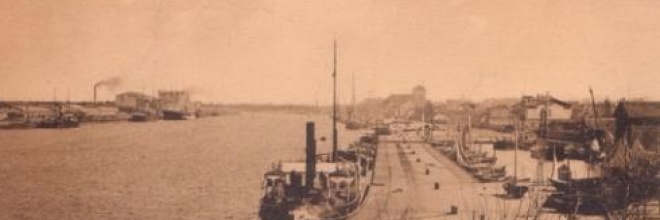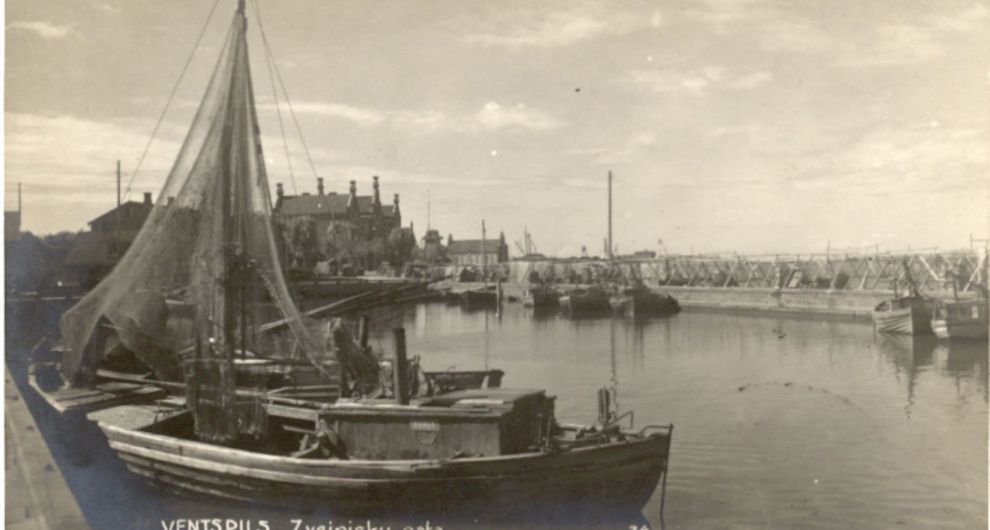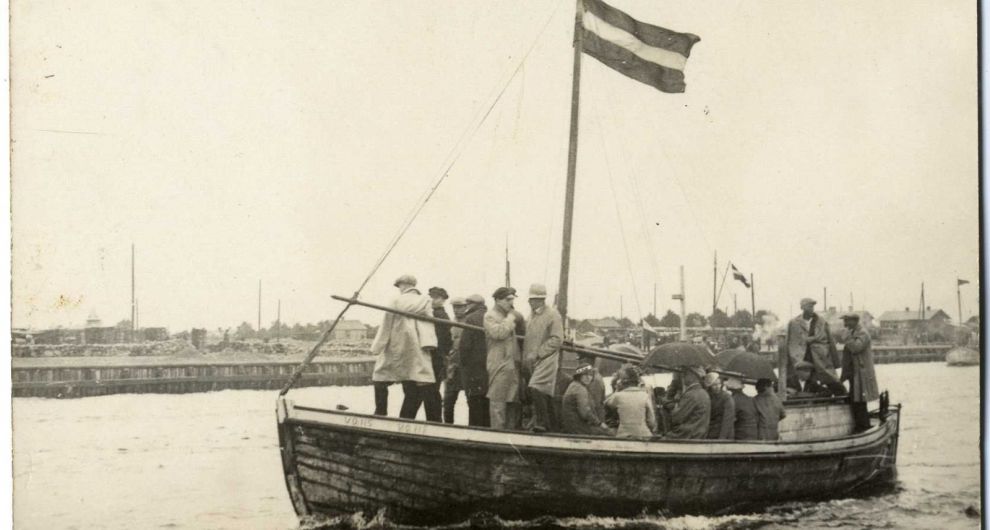The History of the Port
Due to its convenient geographical location on the Baltic Sea coast as well as its non-freezing port, Ventspils has long served as an important East–West trade corridor. Similarly today, the Baltic Sea Region is one of the fastest growing areas in the European Union. The harbour activity on the coast of the Baltic Sea — both during the times of the Hanseatic League and nowadays — has always been a significant driving force behind the economic growth of this region.
750 years of Freeport
History of the Freeport
The first written sources about the port of Ventspils trace back to 1263. The beginnings of Ventspils can be found in the 13th century when German Crusaders built a fortress in the Baltic Sea region near the estuary of Venta as well as the first primitive ship pier to accept merchant vessels. During the Middle Ages, Ventspils became a member of the trade alliance between the northern towns of Germany — the Hanseatic League. This alliance was able to unite the towns near the Baltic Sea gaining monopoly rights in the field of trade.
Under the rule of Duke of Courland and Semigallia Jacob Kettler (1642–1682), Ventspils enjoyed prosperity becoming the leading port of the Duchy of Courland and Semigallia as well as its manufacturing centre. More than 135 vessels, which were later sold in Europe, were built in the shipyards. The busy life of the port ceased after 1682.
Ventspils began to regain the status of a strategically important transport hub in 1795, when the Duchy of Courland and Semigallia was incorporated into the Russian Empire. Most of the Baltic Sea ports that belonged to Russia froze for at least half a year during the winter time, which is why Ventspils port achieved increasingly more awareness, and Russian imports and exports to the Western European states via Ventspils grew rapidly.
At the end of the 19th century, construction works of unprecedented volume were started at the port. New berths, moles, storehouses and storage cellars were built and a unique elevator with a grain-dryer with equipment from Japan was installed — nowhere in the world there was an equivalent for it. The construction of the railway line Moscow–Ventspils at the beginning of the 20th century allowed Ventspils to become the first Baltic Sea port to join the Russian railway network. By 1912, Ventspils significantly exceeded Liepāja in terms of freight traffic volume.
During World War I and World War II, as well as in the period between the wars — during the so-called Latvian period of independence — the port of Ventspils lost its positions. Processing of timber deck cargoes dominated in the port, yet the growth rates of pre-war mechanisation were not matched, and the port began to stagnate.
A rapid expansion of the processing industry in the port of Ventspils was re-established during the 1950s, when plans for a single infrastructure of the city of Ventspils and the port of Ventspils, including networks of streets and access roads, security of electric supply, and sites for warehouses and cargoes, were developed. It was decided to establish Ventspils as the leading export and processing centre of oil, chemical and other products in the USSR. During the 60s, Ventspils regained its status of a significant transit centre.
During the period after the restoration of the independence of Latvia, in the second half of the 1990s, the restructuring and an ambitious modernisation of the port — deepening the water area of the port and the bed of Venta, reconstructing hydrotechnical constructions, building of new berths — began. The new administration of the port of Ventspils (since 1997 — Freeport of Ventspils Authority) became the main operator and developer of the area of the port. The formation of the Special economic zone (SEZ) in 1997 allows companies to acquire significant tax reliefs and creates a friendly environment for investments up to the present day. In 2002, Freeport of Ventspils Authority began to persistently develop the industrial zone of the territory of the free port by attracting industrial companies to Ventspils.
At the moment, the total area of the port of Ventspils is approximately 2.5 thousand hectares, and this industrial territory is favourable for the growth of companies. Enterprises dealing with port as well as industrial production operate here. In the terminals of the port, oil products, crude oil, liquid chemicals, coal, different metals, fertilisers, timber, cereals, juice concentrates, containers and various general cargoes are transhipped — mostly to regions of the EU, CIS and Asia.
During the last decade, ambitious investment projects have been carried out in the port of Ventspils. They have strengthened the competitiveness of the port as well as a balanced development of industrial production. In the city, the industrial zone is developing — a home for companies specialising in making high value‑added services and products in the fields of IT, telecommunications, electronics, engineering, industrial automation, computer design, space technologies and others. In the 21st century, a new task has been set for ports — the task of a Community Manager. Accordingly, Freeport of Ventspils Authority has successfully developed and maintained relations between the parties engaged — entrepreneurs and the society.
Long gone is the time when Ventspils was just a place to visit when driving by. Today, Ventspils is one of the most attractive cities for living on the coast of the Baltic Sea — it is modern, clean, has a convenient and developed infrastructure, offers various cultural events, all types of education, sports activities and leisure. This is a place where a modern port, innovative production sites and a wonderful beach coexist, which attracts more and more visitors from different countries each year.

















